The primitive people were the first to use the counting device. Stones, bones, and sticks were used by them as counting tools. As the time progressed, the human mind and technology took a giant leap and the development of more computing devices began. Few of the popular computing devices in the order of them being developed, have been explained below:
Abacus
Abacus is believed to be the first computer and hence, the history of computer begins with it. The existing belief says that Abacus was developed some 4000 years ago, by the Chinese.
It has a wooden rack that contains metal rods upon which beads are mounted. The abacus operator moved the beads to perform arithmetic calculations by following some set of rules. Some countries like Japan, Russia, and China still use Abacus. The image of this computer is provided below:
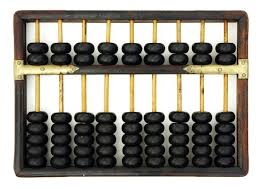
Napier’s Bones
Merchiston’s John Napier developed this Manually-Operated calculating device. 9 different bones or ivory strips with numbers marked on them were used by Napier to perform multiplication and division. Hence, this tool was named “Napier’s Bones”. It also became the first device to have used the decimal point.
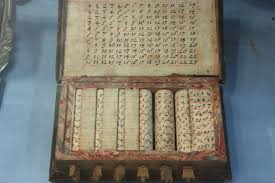
Pascaline
It is also called Adding Machine or Arithmetic Machine. It was invented by Biaise Pascal who was a French mathematician-philosopher. The period of its invention was between 1642 and 1644. It is widely believed that it was the first automatic and mechanical calculator.
This machine was developed by Pascal to help his father who was a tax accountant. Addition and subtraction are the only functions that could be performed by it. Pascaline was a wooden box with a series of wheels and gears. On the completion of one rotatory motion of a wheel, the machine rotates the neighbouring wheel. To read the totals, there’s a series of windows provided on the top of the wheels.
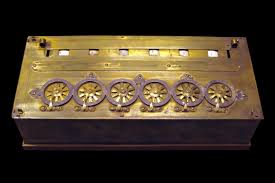
Stepped Reckoner or Leibnitz Wheel
German Mathematician-philosopher, Gottfried Wilhelm Leibnitz, developed this machine in 1673. He further worked on Pascal’s invention and improved upon it to develop this machine. It was a digital mechanical calculator made of fluted drums instead of gears, hence it was called Stepped Reckoner. Given is its image:
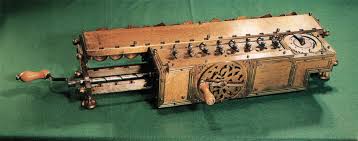
Difference Engine
Charles Babbage, known as the Father of Modern Computer, designed it in the early 1820s. It was a mechanical computer made to perform simple calculations. This steam driven calculating device could also solve tables of numbers like logarithm tables.
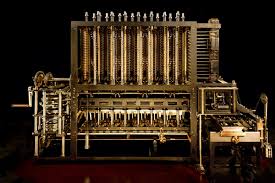
Analytical Engine
Charles Babbage developed this calculating machine in 1830. It was a mechanical computer under which punch-cards were used as inputs. It could store information as a permanent memory and was capable of solving any mathematical problem.
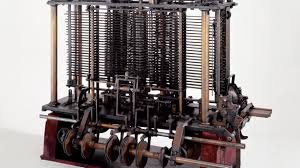
Tabulating Machine
American statistician, Herman Hollerith, invented this mechanical tabulator in 1890. It was based on punch cards. It could put statistics in a tabular form and sort or record data or information. The U.S. Census used this machine in 1890. Hollerith’s Tabulating Machine Company that later went on to become IBM in 1924 was also started by Herman Hollerith.
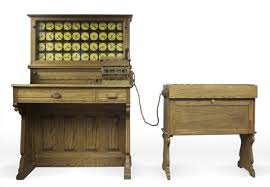
Differential Analyzer
This was the first electronic computer to be introduced in the United States, in 1930. Vannevar Bush invented this analog device. The machine contained vaccum tubes that would switch electrical signals in order to perform calculations. It could complete as much as 25 calculations in just a matter of few minutes.
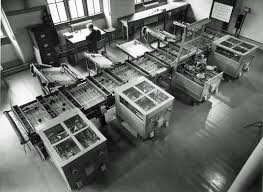
Mark I
Howard Aiken, in 1937, planned to create a machine that could easily perform calculations involving large numbers and with this the history of computers was in line to go through major changes. The resultant output of this was the Mark I Computer- the first programmable digital computer- built as a partnership between Harvard and IBM, in 1944.
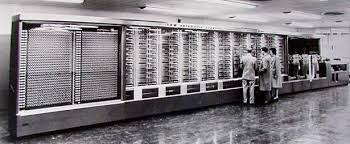
Generation of Computers
The specific improvements that computer technology goes through over the years are collectively known as a generation of computers. In 1946, in order to perform the counting, electronic pathways called circuits were developed. These circuits replaced the gears and other mechanical parts that were used for counting in machines prior to 1946.
Every new generation saw the size of circuits get smaller, complemented with more advanced features and technology, as compared to the previous generation. This miniaturization helped increase the memory, power and speed of the computers. Mainly, there are 5 generations of computers and they are described below:
First Generation Computers (1946-1959)
These computers were slow, expensive and huge. Vacuum tubes were used as the basic components of memory and CPU in these computers. They largely depended upon punch cards and batch operating systems. In this generation, paper tape and magnetic tape were used as input and output devices.
Popular computers of the first generation:
- EDVAC (Electronic Discrete Variable Automatic Computer)
- ENIAC (Electronic Numerical Integrator and Computer)
- IBM-701
- UNIVACI (Universal Automatic Computer)
- IBM-650
Second Generation Computers (1959-1965)
The second generation was dominated by the transistor computers. These computers consisted of transistors that were compact, cheap and also consumed less power. The transistor computers were way ahead in terms of speed than the first generation computers.
In this generation, primary memory comprised of magnetic cores and secondary storage comprised of magnetic disc and tapes. These computers used Assembly language and programming languages like FORTRAN and COBOL, and multiprocessing operating systems and batch processing.
Popular computers of the second generation are:
- IBM 7094
- IBM 1620
- CDC 3600
- CDC 1604
- UNIVAC 1108
Third Generation Computers
The third generation of computers replaced transistors with the use of Integrated Circuits (ICs). One single IC has the capacity of packing a large number of transistors which reduced the cost and increased the power of computers. The reliability, efficiency of the computers increased and their size reduced. Time-sharing, remote processing, and multi programming operating systems were used in this generation. Moreover, high level programming languages like COBOL, FORTRON-II TO IV, ALGOL-68, PASCAL PL/1 were used by the third generation of computers.
Popular computers of this generation are:
- Honeywell-6000 series
- IBM-370/168
- IBM 360 series
- TDC-316
- PDP ( Personal Data Processor)
Fourth Generation Computers (1971-1980)
This generation introduced another change as it used Very Large Scale Integrated (VLSI) circuits. Under VLSI circuits, millions of transistors and other circuit elements are contained under a single chip. Due to these chips, the fourth generation computers were more powerful, fast, compact and affordable. They used distributed, time sharing, and real time operating systems. Programming languages like C++, C and DBASE were also used in the fourth generation computers.
Popular computers of this generation are:
- STAR 1000
- DEC 10
- CRAY-X-MP (SUPER COMPUTER)
- CRAY-1 (SUPER COMPUTER)
- PDP 11
Fifth Generation Computers (1980- till date)
These computers replaced the VLSI technology with Ultra Large Scale Integration (ULSI). With the help of ULSI, the production of microprocessor chips having ten million electronic components was made possible. Artificial Intelligence (AI) software and parallel processing hardware are being used by the computers of this generation. The programming languages like C++, C, .Net, Java, etc. are being used in this generation.
Popular computers of the current generation are:
- Laptop
- Desktop
- UltraBook
- NoteBook
- ChromeBook